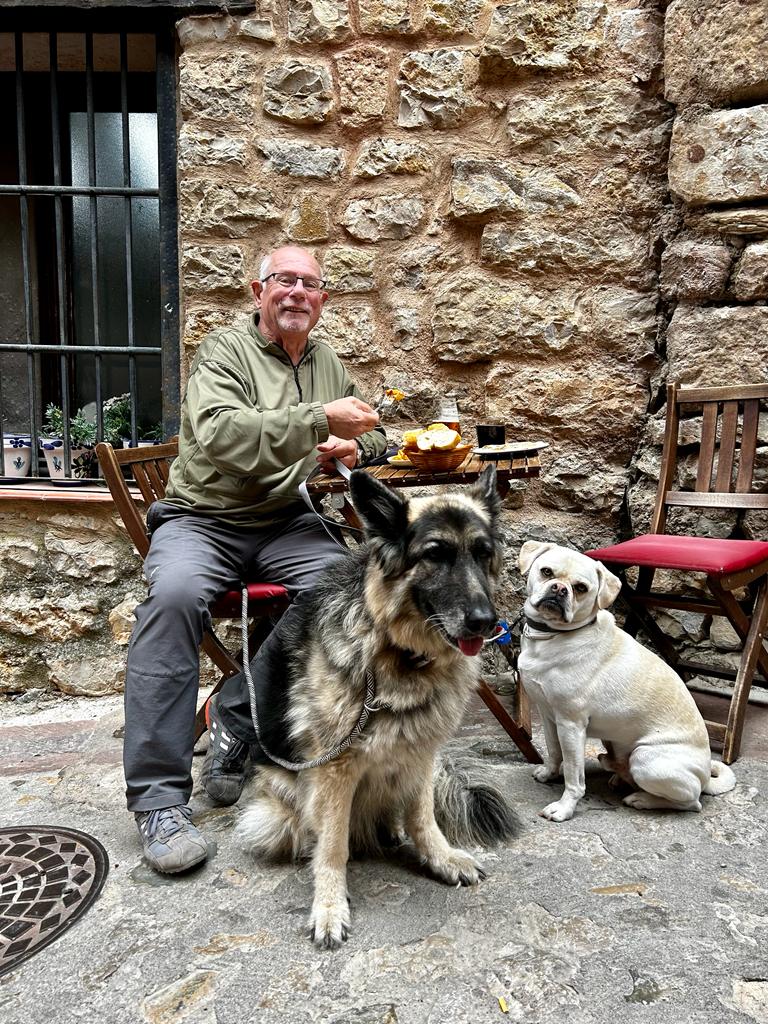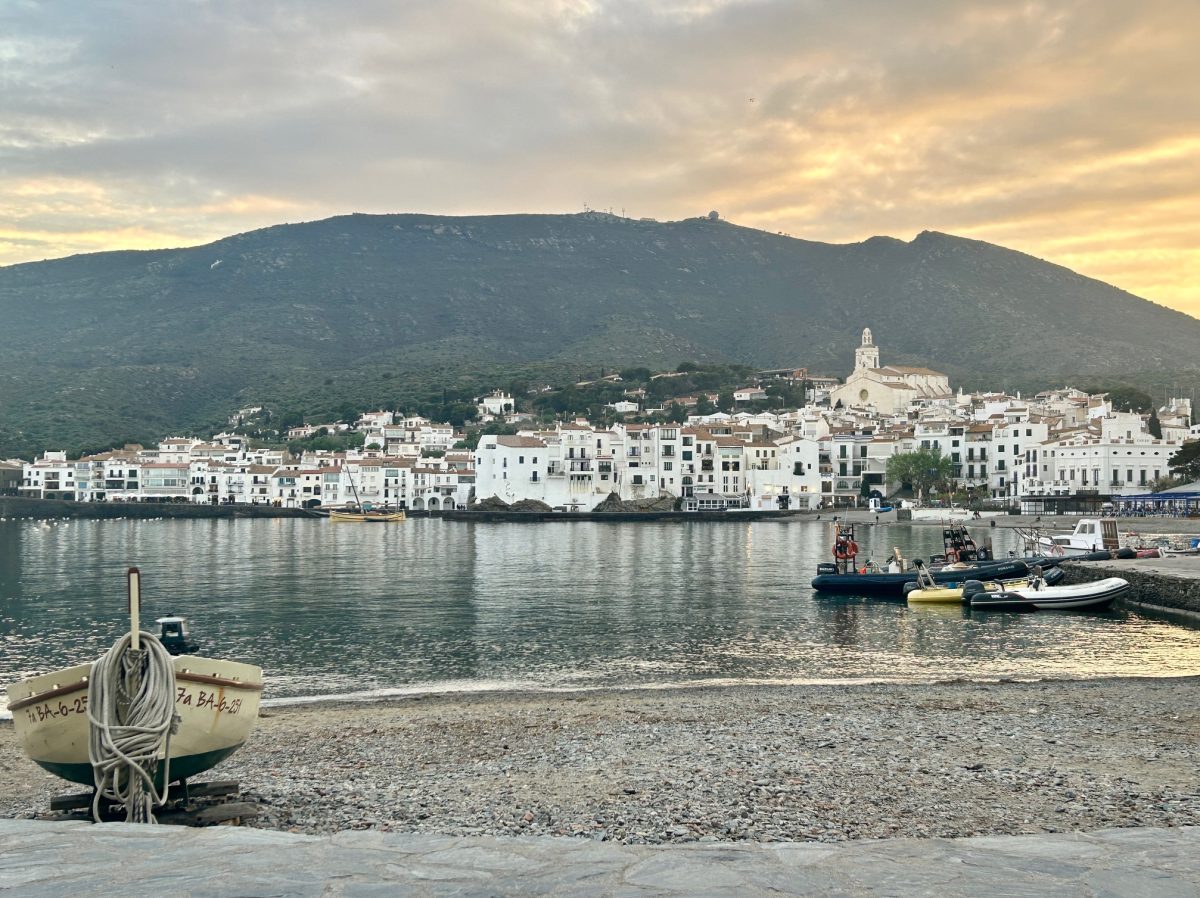I like Albarracin. It’s another unique rural village full of character and allure. Vanya didn’t find it so pleasant but that was in part because her hip has been playing up and the village sits atop a near vertical cliff face with a great many slopes and steps (which made it difficult for her to get around) and in part because it sits at 1200 metres above sea level and was quite cold at night (the temperature went down to just 2 degrees centigrade which didn’t please her). Having said that, we would both highly recommend visiting Albarracin.
Perched on a rocky hill high above the Rio Guadalavier in a natural bowl in the mountains of Aragon’s Teruel Province, Albarracin ranks amongst the most beautiful of all the ‘Puebla Mas Bonitas d’Espana’. It was once the capital of a Moorish Kingdom (a Taifa) and is one of the best examples of a ‘Mujedar Town’ anywhere in Spain. Mujedar refers to the group of Muslims who stayed on in Spain after it was reclaimed from the Moors by the Christians. It is also a term for Mudejar art and architecture which is an attractive blend of Spanish and Islamic art.
Albarracin clings to the steep sides of a rocky crag. Above it, safeguarding the southern and western sides of the village, are a series of high castle walls some of which date back to the 10th century. The other two sides of the village, the northern and eastern sides, are protected by a deep ravine formed by the Rio Guadalavier.
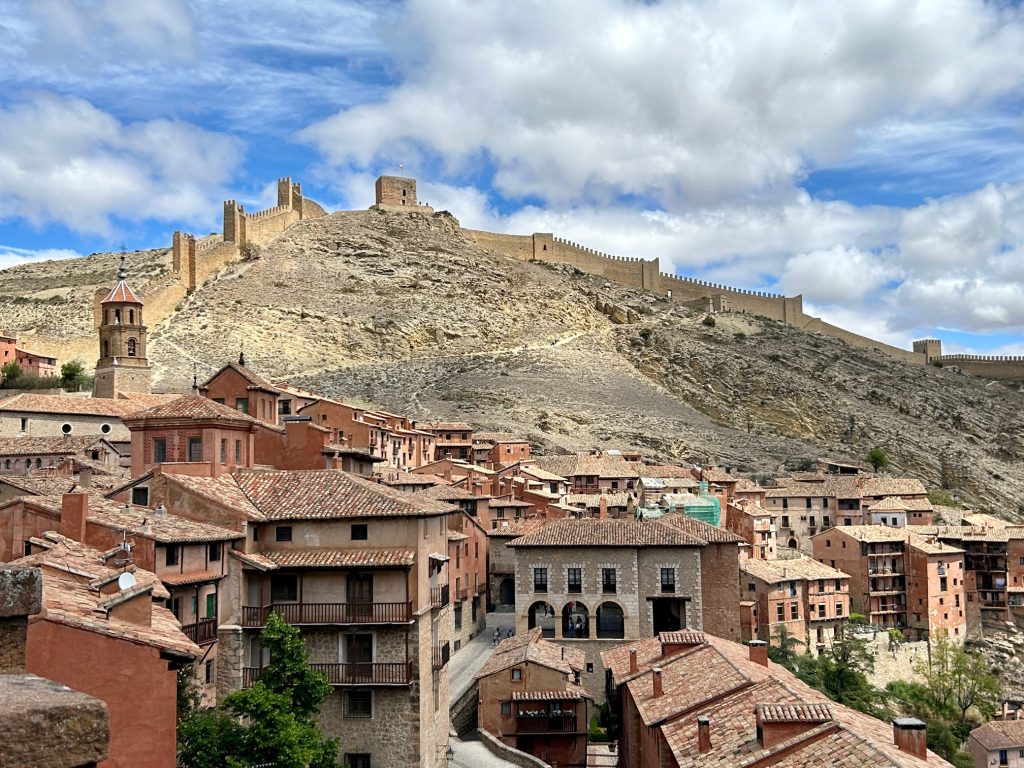
Over the centuries, three different fortresses have been built into the castle walls. The one at the top of the hill in this photo is the 12th centurey Torre del Andador, a Muslim Watchtower.
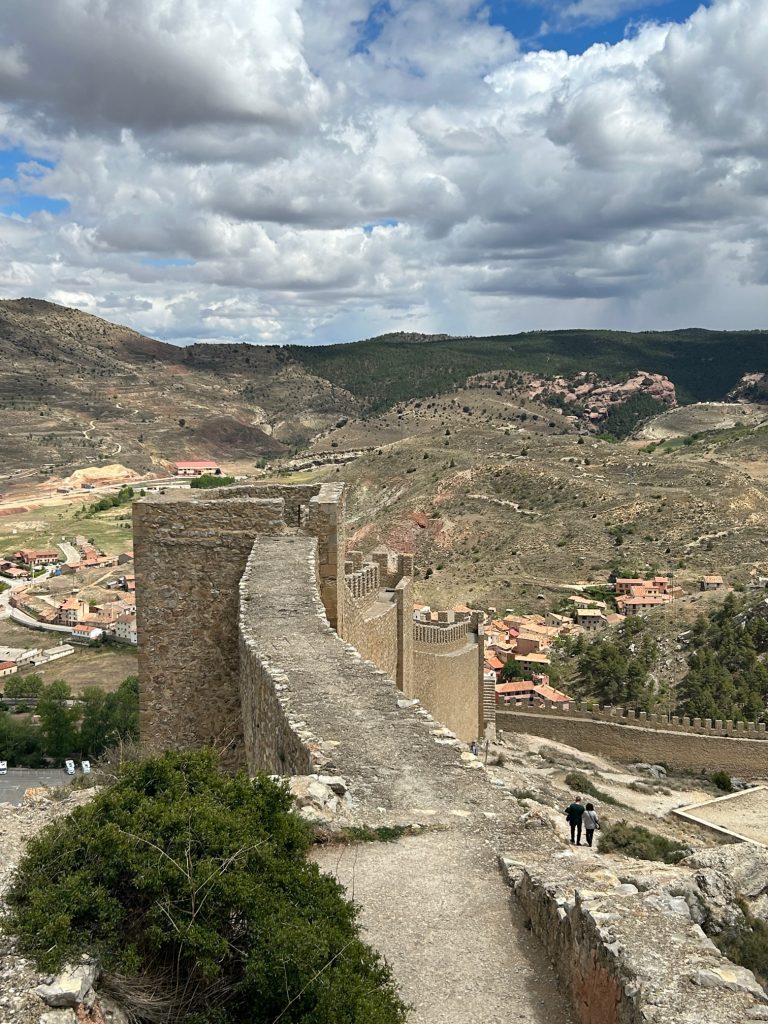
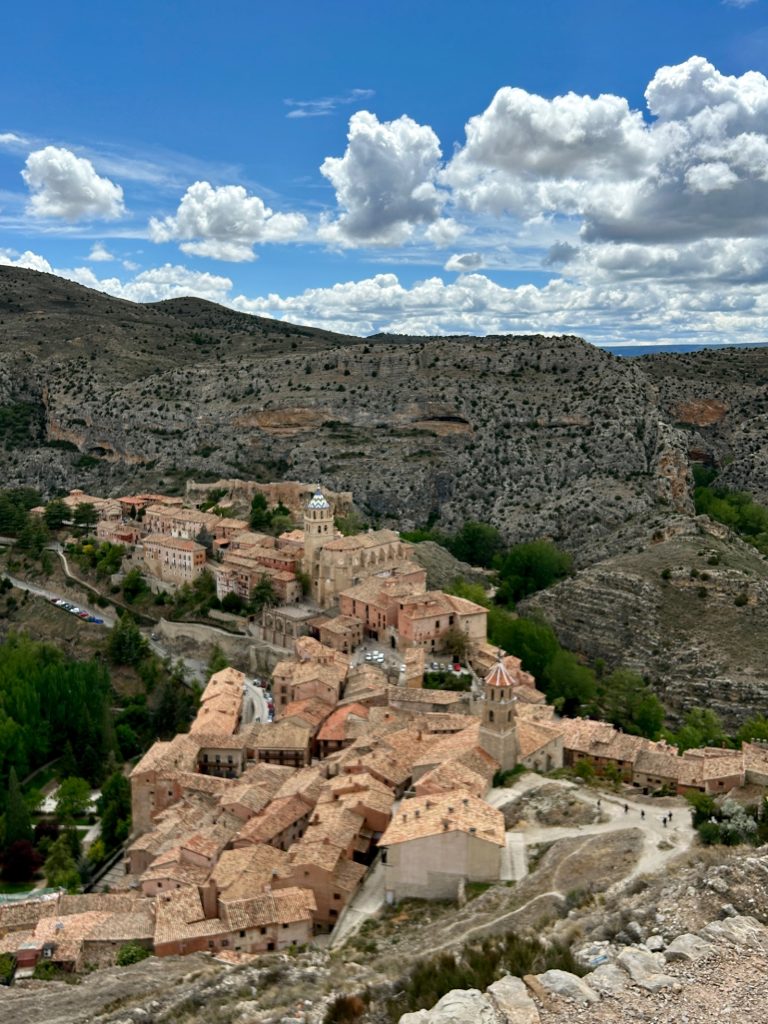
Two views from the Torre del Andador
Today’s Albarracin is actually a heavily restored version of the village which was badly damaged during the 1936 Civil War. When the war ended, the local authorities rebuilt the shattered houses according to centuries old traditions and plastered the walls with a red clay mix to give the place a uniform pink hue. This initiative has clearly paid off as, these days, the village’s principal income is from tourism although; there were few tourists around during our stay.
The Calle de Don Bernardo Zapater leads past the Albarracin Hotel towards the village’s main square and town hall (the Ayuntamiento de Abarracin). From this small attractive cobbled and very uneven square, various narrow lanes radiate off into the village. The whole village is a maze of steep twisting lanes and alleys (many of them cul de sacs) and hanging, crooked houses with wooden balconies some of which appear to tumble into each other.
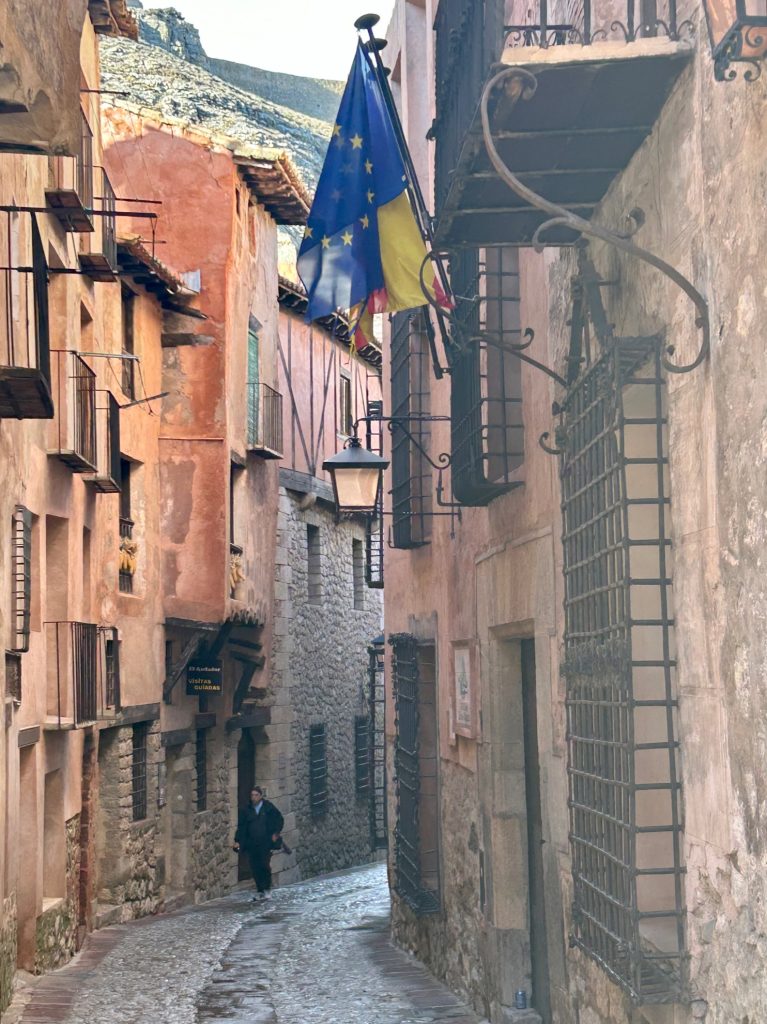
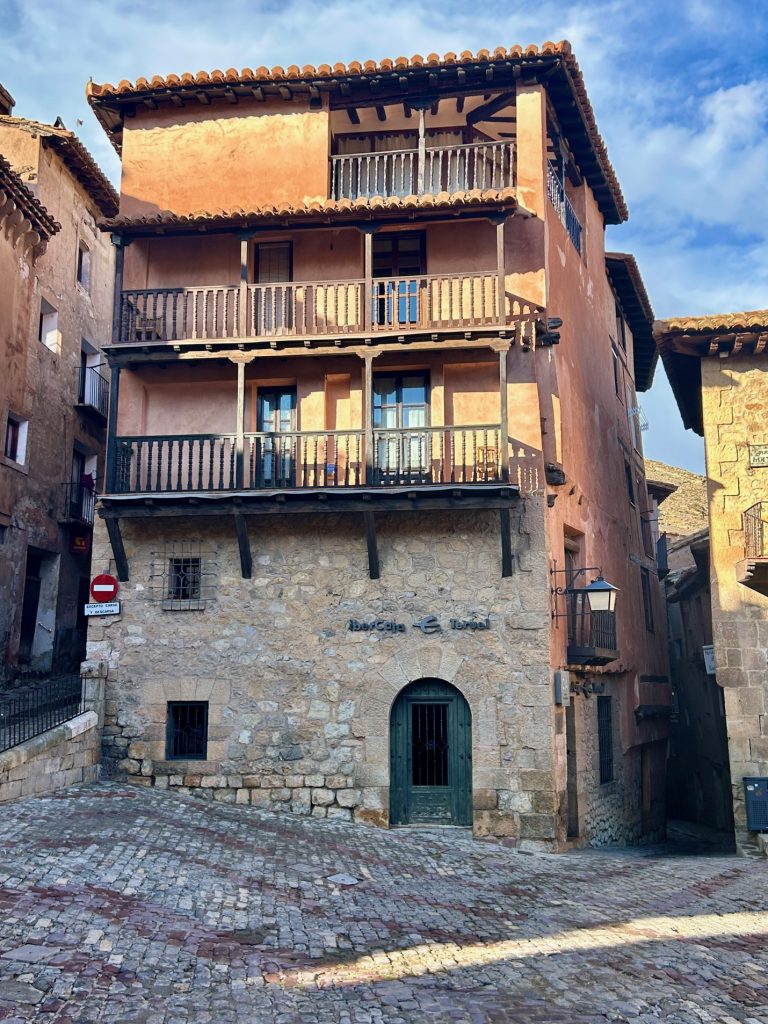
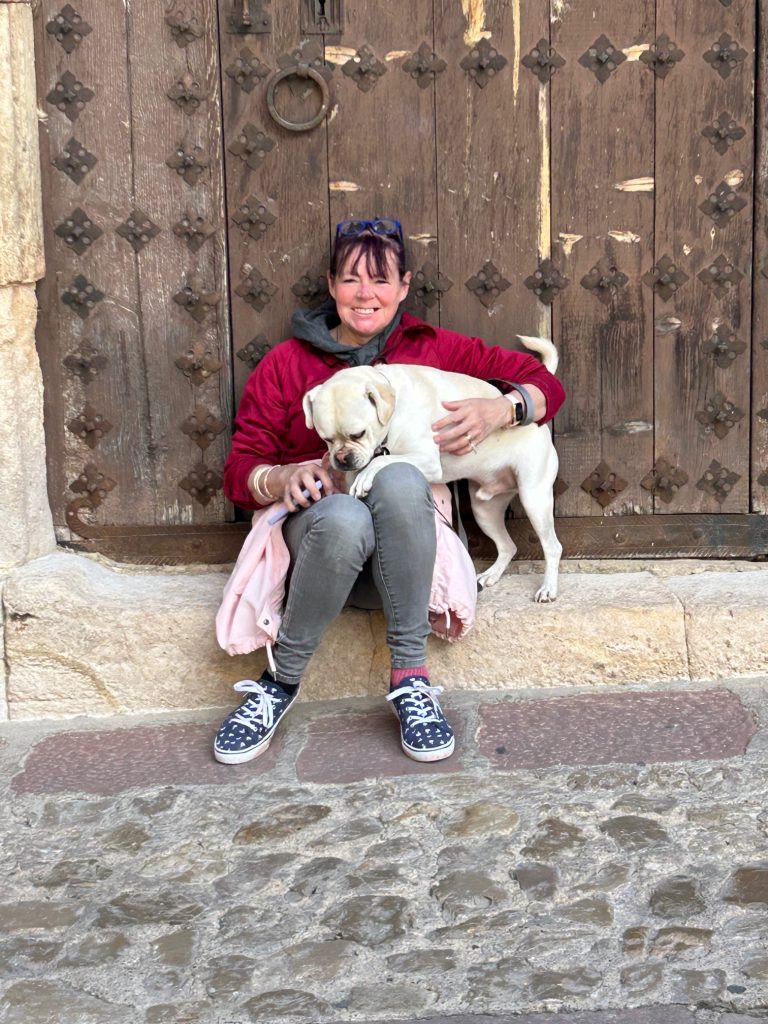
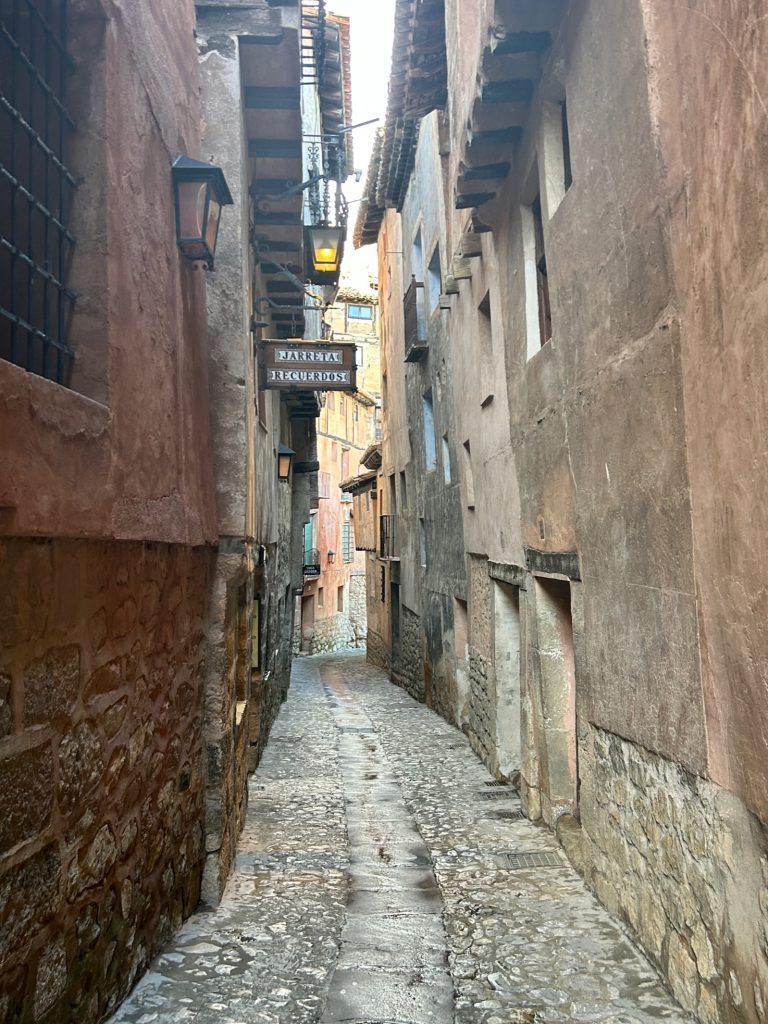
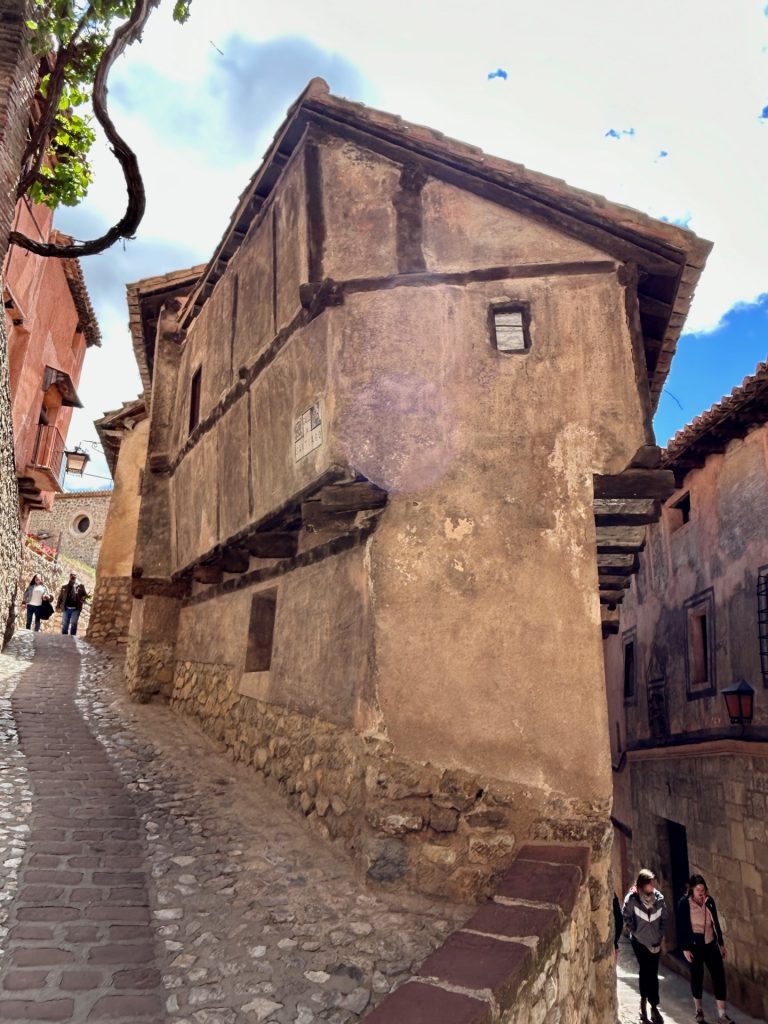
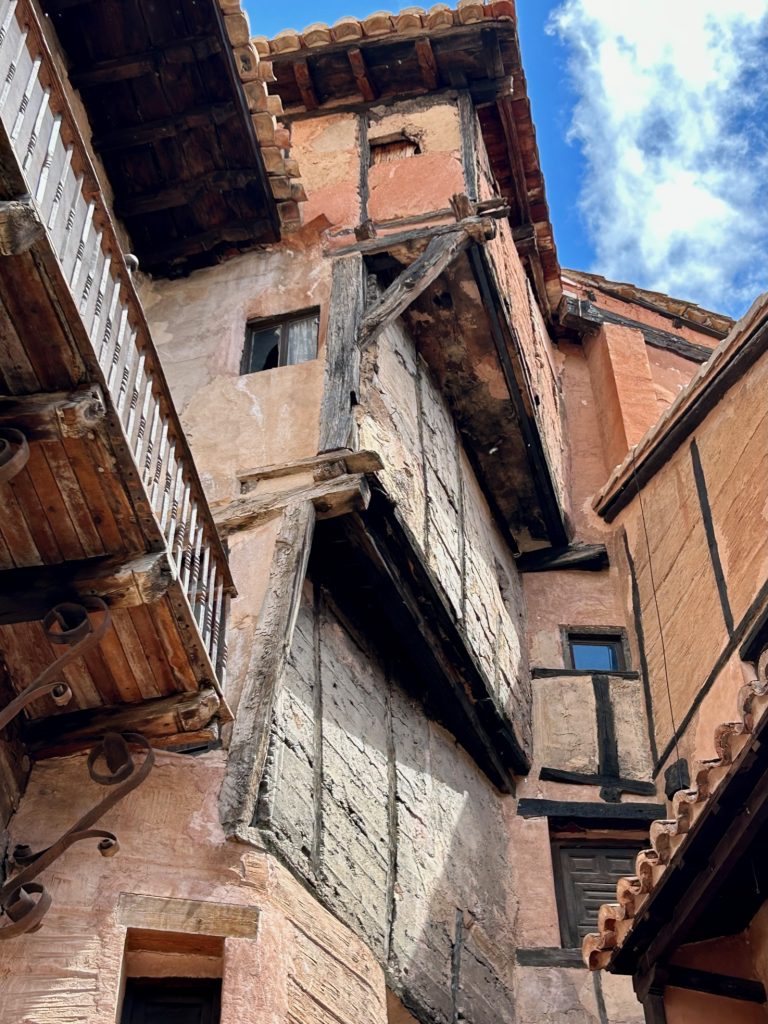
A legend surrounds one of the more impressive buildings in the town – an old medieval defence tower known as the Torre de Dona Blanca. Dona Blanca was a princess, the youngest sister of a King of Aragon and she was extraordinarily beautiful; so much so that her brother’s wife was jealous of her and had her seized and imprisoned in the tower when she was passing through Albarracin on her way to Castile. Dona Blanca was never seen again but legend has it that she died alone in the tower and the villagers believe that every full moon in the summer, when the bells of the church of Santa María ring at midnight, the figure of a grieving woman (the spirit of Doña Blanca) can be seen wandering through the city.

Torre de Dona Blanca
Towards the top end of the village is a Roman Catholic Cathedral (the Cathedral of El Salvador). It was built in a Romanesque-Mudejar style on the site of an old mosque some time during the 16th century. Next to it is the Dolz del Espejo (the Bishop’s Palace) which was built at much the same time but was altered considerably during the 18th century. Unfortunately, both buildings were closed while we were there. I do like the tiles on the cathedral’s belltowers!
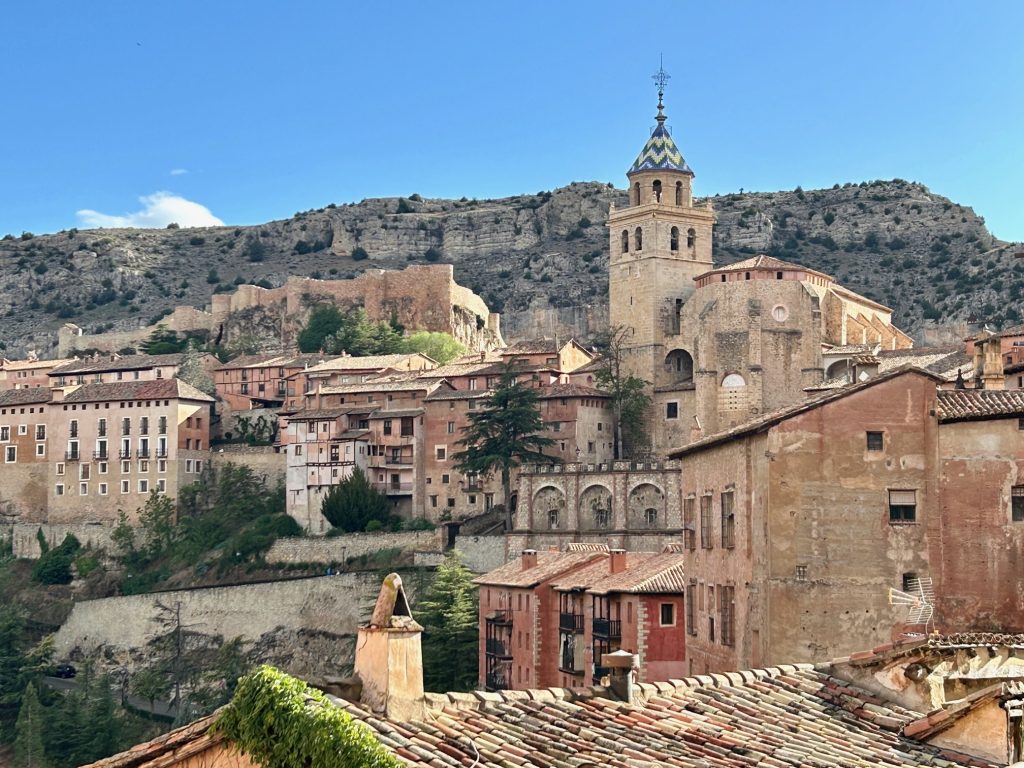
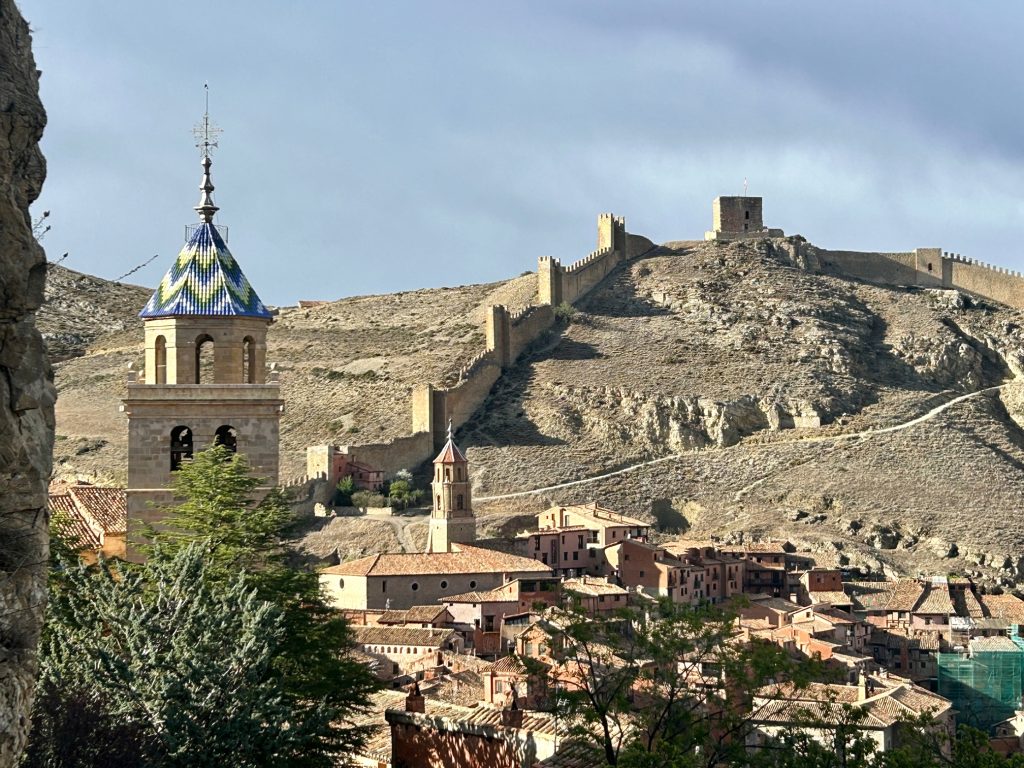
Two views of the belltower of the Cathedral of El Salvador.
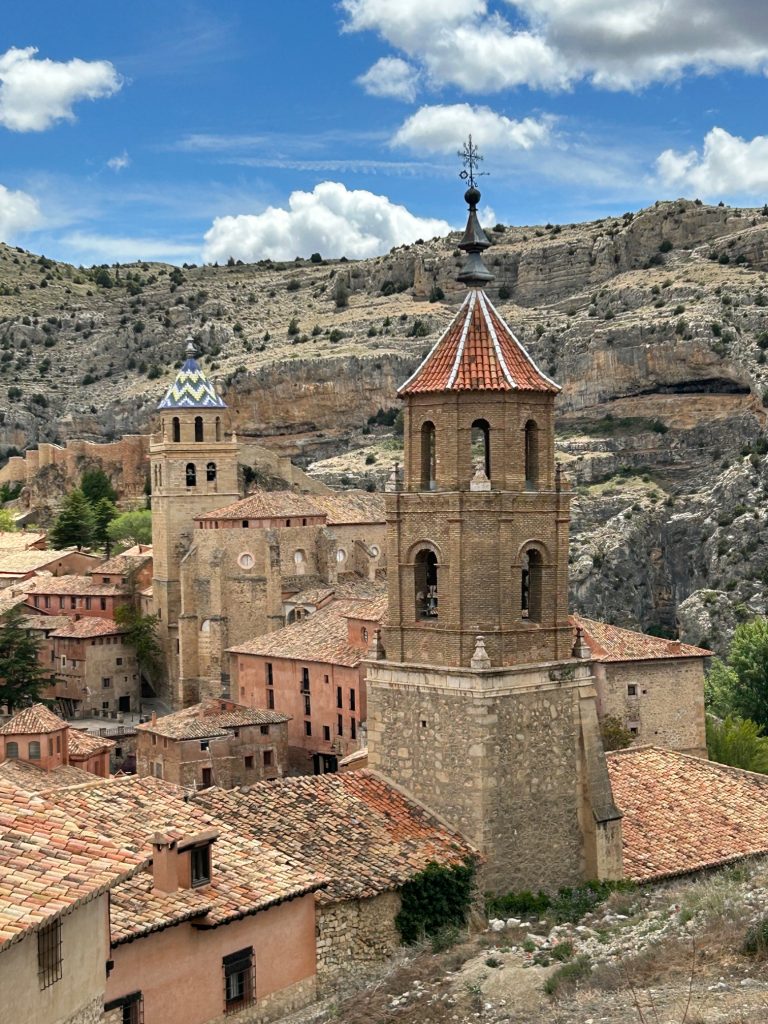
This photo captures the bell towers of the Church of Santa Maria (in the foreground) and the Cathedral of El Salvador (in the background)...
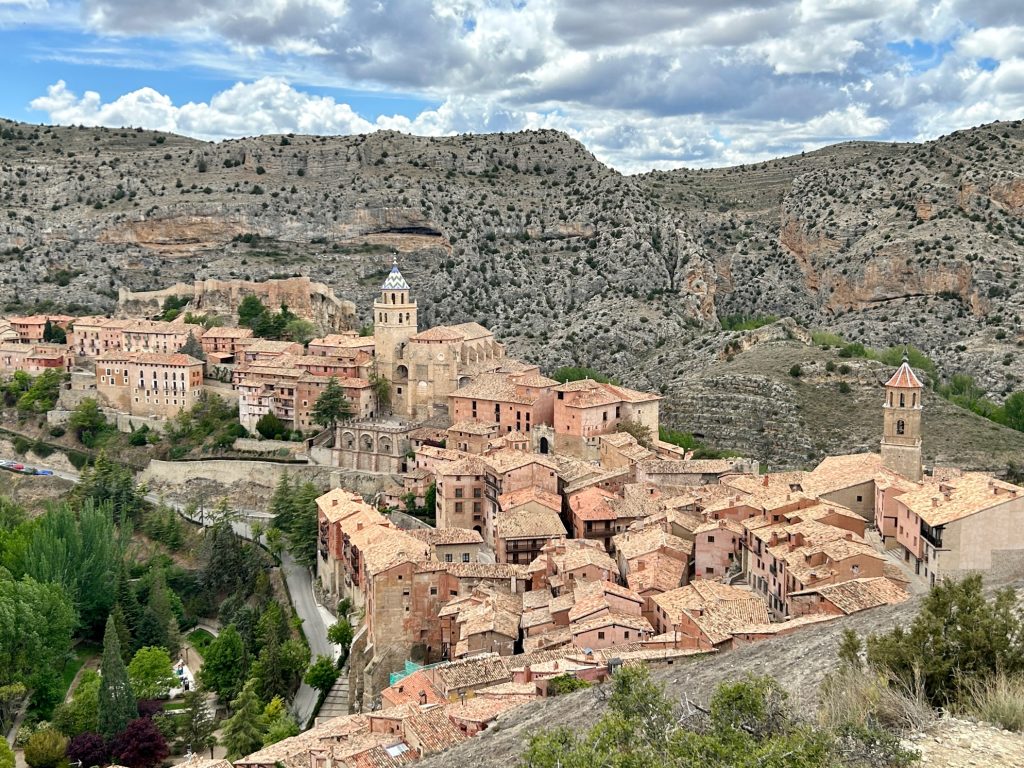
… but these two are my favourites – looking down on the town from the Moorish Watchtower.
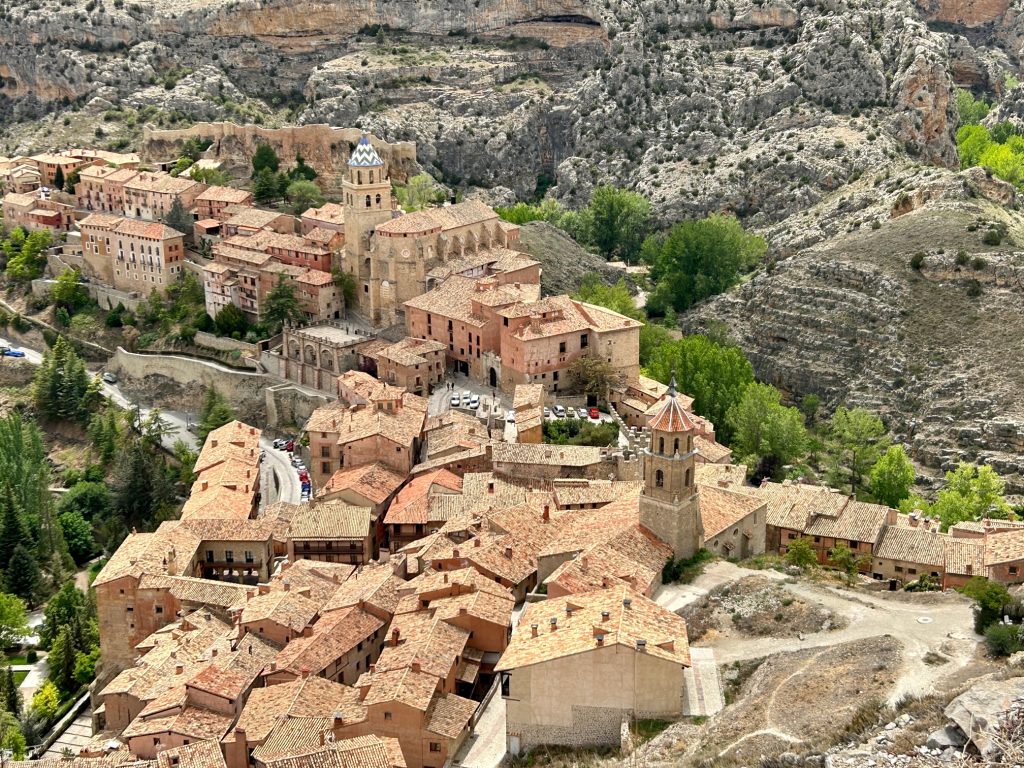
I was going to write about some of the village’s history, which in parts is very bloodthirsty (especially just after the Caliphate of Cordoba was dissolved and Albarracin was ruled by the 20 year old Abu Mohamed Hudail ben Jalaf ben Lubb – although things got even worse under his son Abdel Melic) but instead, I’ll leave it at that…
